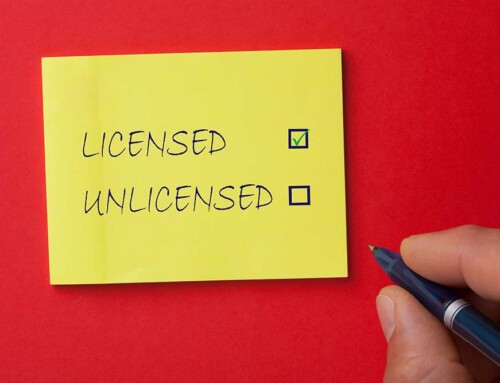Schedule a Consultation: 858.483.9200
Forming Partnerships and Joint Ventures in California
Under California law, general partnerships and joint ventures are created by the agreement among two or more persons/entities to run a business and share the profits. California statutes read as follows: “the association of two or more persons to carry on as co-owners [of] a business for profit forms a partnership, whether or not the persons intend to form a partnership.” See Cal. Corp. Code, § 16202, subd. (a). Under California law, the basic elements of a partnership are the same as those for a joint venture.
Because a partnership and joint venture are agreements, many of legal principles from contract law are applicable to issues of partnership formation. Thus, for a contract to be properly formed, there must be a “meeting of the minds.” This is true for partnerships. There must be a “meeting of the minds” with respect to some common business undertaking, the sharing of profits and losses, and the right of joint control. If you are considering creating a partnership or joint venture, the best business and legal practice is to have a good San Diego corporate attorney draft up the partnership or joint venture agreement. Important provisions often include:
- Statement of the business to be conducted
- Provisions for who controls the partnership/joint venture
- Obligations of respective partners
- What happens to profits/losses
- Length and termination
- Disposition of assets upon completion/termination
- Default and breach provisions
- Indemnification and other liability limitation provisions
- And more
It is important to negotiate and write down the agreement made by the parties because it is possible to create a partnership or joint venture orally or via conduct. Just like in contract law, the “meeting of the minds” requirement for a partnership can be determined not only from written words, but from oral statements, from the conduct of the parties, and from the surrounding circumstances. Although the best practice is to use written agreements, for both contracts and for partnerships, no particular formality or specific steps are needed as long as the terms of the agreement can be understood from what was said and done. It is often a best practice to have a custom agreement drafted to make sure both parties are protected and on the same page with the terms of the agreement.
A good example of these legal principles comes from a recent California Court of Appeals unpublished opinion. See Miller v. Fleming, Case No. A150554 (Cal. App. 1st Dist. August 3, 2018) (unpublished). The case was decided 2-1 among the judges. The main issue was whether or not Miller and Fleming had agreed to form a partnership via their oral statements, actions, and emails. The trial court had said “yes” and, originally, awarded Miller compensatory damages in the amount of $848,095 and $2.5 million in punitive damages. The trial court found that Miller had proved malice and fraud by clear and convincing evidence. Subsequently, the trial court substituted an award to Miller for $3.7 million in damages.
The Court of Appeals affirmed. The majority found that there was sufficient evidence to support the finding of a partnership. The court also affirmed the damage award since Fleming had earned $7.1 million on the real estate deal in question. The majority highlighted these facts:
- Fleming wanted another source of income
- Miller wanted to advance his career in real estate
- Fleming told Miller the solution “was to create between [the two of them], a partnership …”
- Fleming knew of properties that he could not pursue because of his employment restrictions
- Fleming told Miller that those properties could be pursued via a partnership between he and Miller
- For months, they talked about how they would work together and discussed payment
- They discussed sharing profits equally
- They visited potential properties together
- They analyzed prospective deals together
- Fleming coined the term “WFBM” for their partnership — their initials
- Fleming used the word “partner” when referring to Miller
- Fleming frequently discussed the idea of a “team approach” to operations and compensation
From these and other facts, the Court of Appeals affirmed that there was sufficient evidence to find that Fleming and Miller had formed a partnership.
The dissenting Judge felt the opposite. Supposedly, the partnership was formed in the summer of 2007. But there were emails and other evidence whereby there was clear doubt about the “meeting of the minds” necessary for partnership formation. As one example, there was an email from Miller in October 2007 that stated in part:
“We have never discussed how we would structure deals that we do on our own. It may be premature, but I also think it’s helpful to spell it out so we are clear…When you have some time, I suggest we identify the structure so that when we do in fact pull the trigger on [a real estate] asset, these details have already been addressed.”
For the dissenting judge, emails like this from Miller showed that the arrangement was too indefinite for a finding of a partnership.
Legal lesson: Fleming should have obtained the advice of a good corporate lawyer to draft a solid partnership agreement OR to draft letters and emails making it clear that no partnership or joint venture existed in the summer of 2007.
Contact San Diego Corporate Law Today
If you would like more information about joint ventures and drafting joint venture agreements, contact attorney Michael Leonard, Esq., of San Diego Corporate Law. Mr. Leonard can be reached at (858) 483-9200 or via email. Mr. Leonard’s law practice is focused on business, transactional, and corporate matters and he proudly provides legal services to business owners in San Diego and the surrounding communities.
You Might Also Like:
California General Partnerships
Tips for Forming a San Diego Joint Venture
More Lessons For San Diego Businesses On Protecting Trade Secrets
Buy-Sell Agreements for California Professional Corporations
Top Three Legal Issues for Continuing the Family Business After a Death






